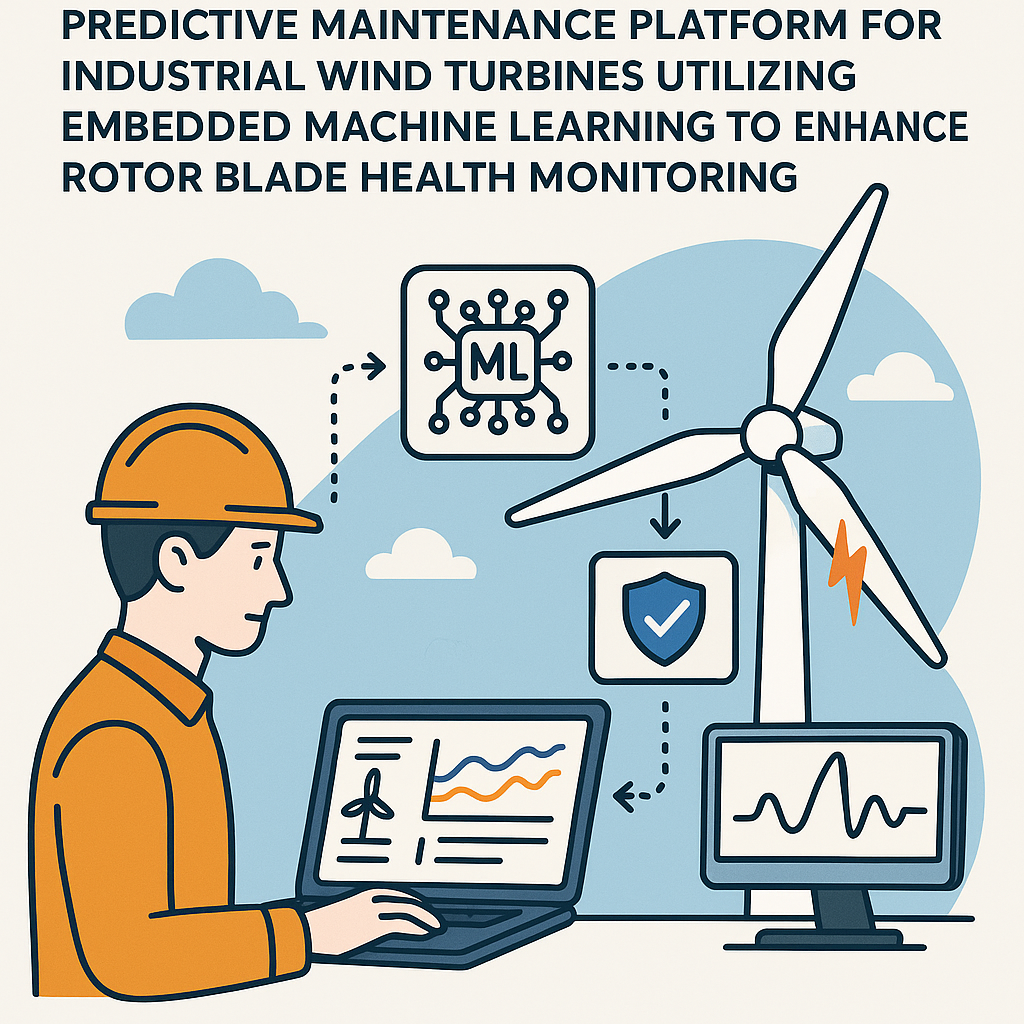Introduction
The deployment of a predictive maintenance platform for industrial wind turbines is a transformative approach that leverages embedded machine learning algorithms to enhance rotor blade health monitoring. As the demand for renewable energy increases, ensuring the optimal performance and longevity of wind turbine components becomes paramount. This article explores the intricacies of implementing such a platform, the benefits it offers, and the future of wind turbine maintenance.
Understanding Predictive Maintenance
Predictive maintenance refers to the practice of using data-driven analytics to predict when equipment will fail, allowing for timely interventions. In the context of wind turbines, this approach can significantly reduce downtime and maintenance costs. Key components of predictive maintenance include:
- Data Collection: Continuous gathering of operational data from various sensors embedded in the turbine.
- Data Analysis: Utilizing machine learning algorithms to analyze the collected data for patterns indicating potential failures.
- Actionable Insights: Generating reports and alerts for maintenance teams to address issues before they lead to significant failures.
The Role of Embedded Machine Learning
Embedded machine learning integrates AI capabilities directly into the devices themselves, in this case, the wind turbines. This innovation allows for real-time processing of data, leading to quicker insights and decisions. The advantages of this approach include:
- Real-Time Monitoring: Analyzing data on-site minimizes latency and enhances responsiveness.
- Reduced Data Transmission Costs: By processing data locally, there is less need for extensive data transfers to centralized servers.
- Enhanced Security: Local processing limits exposure to data breaches since sensitive information is not transmitted over the internet.
Key Features of the Predictive Maintenance Platform
A robust predictive maintenance platform for wind turbines should incorporate several essential features:
- Sensor Integration: The platform must support various sensors that monitor parameters such as vibrations, temperature, and acoustics.
- Machine Learning Algorithms: Algorithms that are capable of identifying anomalies and predicting failures based on historical data.
- User-Friendly Interface: A dashboard that presents data insights, alerts, and maintenance schedules in an easily digestible format.
- Reporting Tools: Automated reporting capabilities that provide maintenance teams with actionable insights.
Implementing the Predictive Maintenance Platform
The implementation of a predictive maintenance platform involves several crucial steps:
- Assessment: Conducting a thorough analysis of the existing maintenance practices and identifying areas for improvement.
- Infrastructure Setup: Installing necessary hardware and software components, including sensors and the machine learning platform.
- Data Integration: Ensuring that all data sources are integrated and can communicate effectively with the predictive maintenance system.
- Training: Providing training for maintenance teams to effectively utilize the new platform and interpret its insights.
- Continuous Improvement: Regularly updating the machine learning models with new data to improve prediction accuracy.
Challenges in Deployment
While the benefits of deploying a predictive maintenance platform are significant, there are challenges to consider:
- Initial Investment: The upfront costs of sensors and machine learning infrastructure can be high.
- Data Quality: Ensuring the accuracy and reliability of data collected from sensors is critical for effective predictions.
- Change Management: Transitioning from traditional maintenance practices to a data-driven approach requires cultural shifts within organizations.
Future of Wind Turbine Maintenance
The future of wind turbine maintenance is poised for significant evolution with advancements in technology. Key trends to watch include:
- Increased Automation: As machine learning algorithms improve, we can expect more automation in maintenance tasks.
- Integration with IoT: The Internet of Things (IoT) will further enhance data collection and real-time analytics capabilities.
- Predictive Analytics Expansion: Predictive maintenance will expand beyond rotor blades to include other critical components of wind turbines.
Conclusion
Deploying a predictive maintenance platform utilizing embedded machine learning for wind turbines presents a significant opportunity to enhance rotor blade health monitoring. By enabling real-time data analysis and actionable insights, this approach not only reduces maintenance costs but also optimizes turbine performance and reliability. As technology continues to evolve, embracing these innovations will be essential for the sustainable growth of the wind energy sector.



